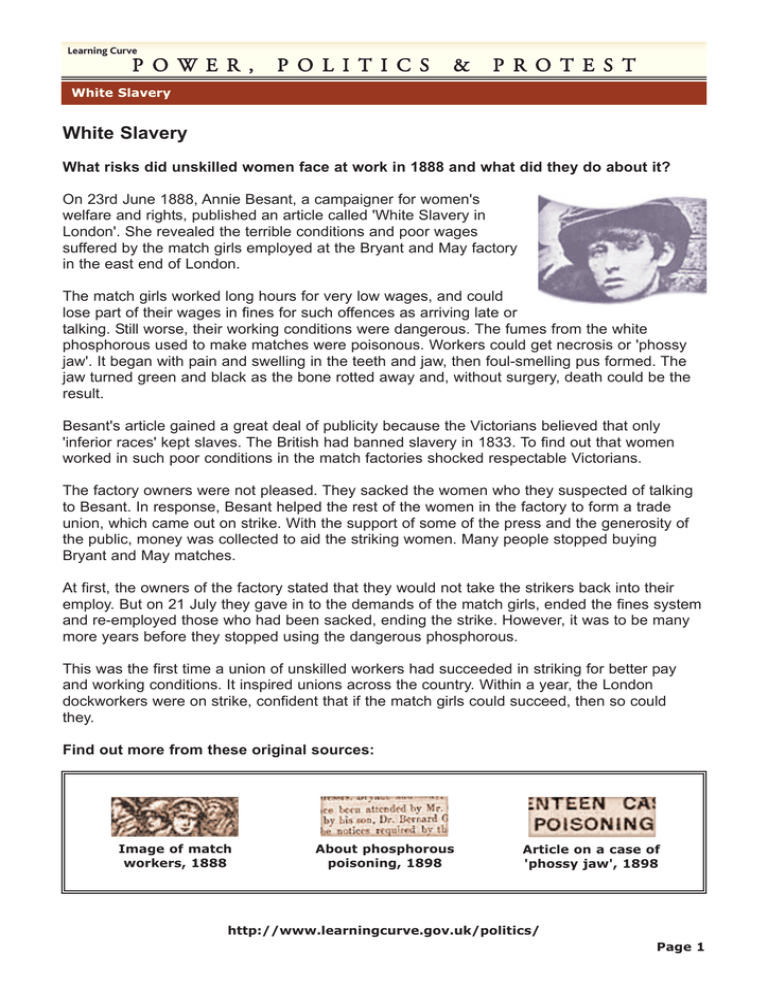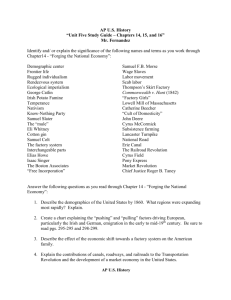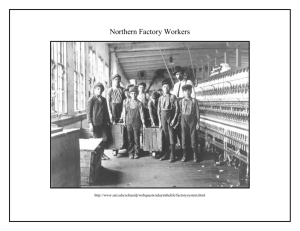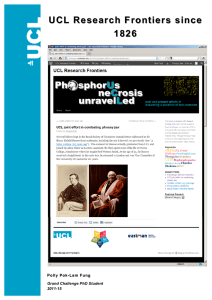m l t b o I == m l i... White Slavery
advertisement

Learning Curve m l t b o I = m l i f q f ` p = C = m o l q b p q White Slavery White Slavery What risks did unskilled women face at work in 1888 and what did they do about it? On 23rd June 1888, Annie Besant, a campaigner for women's welfare and rights, published an article called 'White Slavery in London'. She revealed the terrible conditions and poor wages suffered by the match girls employed at the Bryant and May factory in the east end of London. The match girls worked long hours for very low wages, and could lose part of their wages in fines for such offences as arriving late or talking. Still worse, their working conditions were dangerous. The fumes from the white phosphorous used to make matches were poisonous. Workers could get necrosis or 'phossy jaw'. It began with pain and swelling in the teeth and jaw, then foul-smelling pus formed. The jaw turned green and black as the bone rotted away and, without surgery, death could be the result. Besant's article gained a great deal of publicity because the Victorians believed that only 'inferior races' kept slaves. The British had banned slavery in 1833. To find out that women worked in such poor conditions in the match factories shocked respectable Victorians. The factory owners were not pleased. They sacked the women who they suspected of talking to Besant. In response, Besant helped the rest of the women in the factory to form a trade union, which came out on strike. With the support of some of the press and the generosity of the public, money was collected to aid the striking women. Many people stopped buying Bryant and May matches. At first, the owners of the factory stated that they would not take the strikers back into their employ. But on 21 July they gave in to the demands of the match girls, ended the fines system and re-employed those who had been sacked, ending the strike. However, it was to be many more years before they stopped using the dangerous phosphorous. This was the first time a union of unskilled workers had succeeded in striking for better pay and working conditions. It inspired unions across the country. Within a year, the London dockworkers were on strike, confident that if the match girls could succeed, then so could they. Find out more from these original sources: Image of match workers, 1888 About phosphorous poisoning, 1898 Article on a case of 'phossy jaw', 1898 http://www.learningcurve.gov.uk/politics/ Page 1





